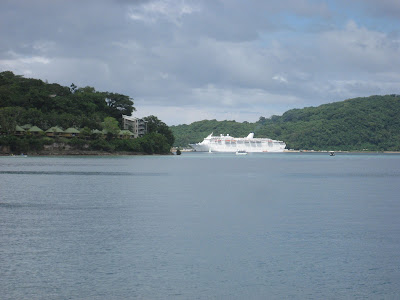 |
| Lightweight Summer Clothes for a South Pacific Cruise |
Just because all the travel brochures show the Pacific Islands as being bathed in bright sunshine and surrounded by turquoise calm waters doesn't mean the weather is always like that. In fact there are two distinct seasons in the South Pacific that you need to be aware of when you are packing for your cruise.
The dry season is during the winter, between May and November. This is when the weather is the most comfortable, with daytime temperatures around 25°C. In most areas the winds are generally light.
Pack lightweight summer clothes that are easy to wash and fast to dry. Also put in a pashmina or light jacket for when you stroll around the decks at night or sit outside on a lounger, stargazing to pick out the Southern Cross constellation.
The wet season is during the Southern Hemisphere summer, between November and April. Then you can expect high humidity which makes the temperatures of 27 to 32°C seem even hotter than they are. The wet season is aptly named for the fierce tropical downpours that last about half an hour or so before the sun shines again.
This time of year is also the cyclone season so you may find you are cruising through high winds and choppy seas.
It's a good idea to pack a fold-up, light umbrella or a clear plastic rain poncho (the type that comes in its own little pouch) in case you get caught in the rain when you're ashore.
You might find it more comfortable in the high humidity to wear clothes made of natural fabrics rather than synthetic materials.
And what ever the season, you will need a sun hat and a swimsuit to make the most of the South Pacific and those exotic tropical island destinations!







